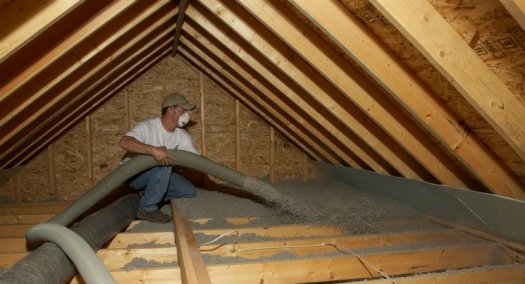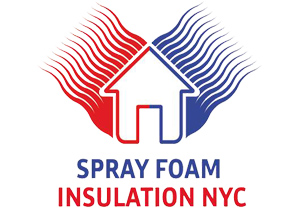Cellulose Insulation in New York: Blown in Cellulose & Loose-Fill
Spray foam Insulation NYC is proud to be a leading installer of cellulose insulation in existing homes, residential new construction homes and commercial projects in New York, New Jersey, Long Island
Cellulose is one of the most environmentally friendly insulation materials, consisting of up to 85 percent recycled content. It can be installed in various areas of homes and buildings, such as attics, walls and crawl spaces.Cellulose Insulation Installation in New York, NY & Surrounding Areas
Our cellulose insulation team adds energy efficiency, comfort and value to homes and buildings. And we have the knowledge, experience and resources that few companies serving in in New York, NY & Surrounding AreasGive us a call 718-594-1976 or contact us online. info@SprayfoamNYC.com We’re looking forward to working with you.

Cellulose Insulation in New York - Staten Island, Brooklyn, Queens, Manhattan, The Bronx
Loose-fill cellulose insulation is composed of pulverized paper and fabric material treated with a flame retardant. Unlike fiberglass insulation installed in roll-out batts on the attic floor, cellulose is blown into the attic under air pressure through large diameter hoses. The mounds of loose material fill every odd-sized nook and cranny in the attic floor, thus providing better coverage than fiberglass batts. Cellulose generally retards heat transfer slightly more efficiently but is associated with higher installation costs.
Dense pack cellulose is used more commonly today for adding retrofit insulation. The dense packing into the wall cavities adds a thermal insulation while providing some level of sound proofing.
Wet spray cellulose has water added to it during the application process. The material has the same thermal and sound retardant properties as dense packing, according to the blog. Wet spray cellulose is almost always installed in new construction before the drywall is put up.
Good for the Earth
Along with being made from a high amount of recycled materials, cellulose insulation has additional eco-friendly benefits. By reusing materials like newspaper, cellulose insulation prevents them from sitting in landfills and producing harmful greenhouse gases as they decompose. The process of making cellulose is more energy-efficient than other materials.Safe for Your Home
Despite being made from paper, cellulose insulation does not make your home vulnerable to fire. Cellulose insulation is treated with fire retardants such as ammonium sulfate, borax, and boric acid to meet all governmental safety requirements. Cellulose insulation can help control the spread of fire because it has a Class 1 Fire Rating. Fiberglass insulation is often faced with paper, which burns easily. Unsurprisingly, this causes cellulose to have a higher fire rating than faced fiberglass insulation.How Cellulose Insulation Works
Cellulose insulation can be used in both existing homes and new construction. It can be blown as loose fill insulation in attic cavities, dense packed into walls and floors, or wet spray for new construction that helps increase heat retention and has the potential to dampen noise levels.Dense pack cellulose is used more commonly today for adding retrofit insulation. The dense packing into the wall cavities adds a thermal insulation while providing some level of sound proofing.
Wet spray cellulose has water added to it during the application process. The material has the same thermal and sound retardant properties as dense packing, according to the blog. Wet spray cellulose is almost always installed in new construction before the drywall is put up.
How cellulose insulation gives you unmatched fire protection.
Cellulose Insulation Gives you Unmatched Fire Protection
If you’ve ever seen how quickly flames can spread, you know it’s pretty unbelievable. We’re not exaggerating to say that every second really does count in getting out of your house if there’s ever a fire.
And that’s where Greenfiber cellulose insulation comes in because it can make the critical difference when it counts the most. That’s for two reasons:
Here’s how effective our insulation is: The Maryland Fire and Rescue Institute conducted The Big Burn demonstration comparing the fire resistance of a non-insulated structure, a fiberglass-insulated structure and a cellulose-insulated structure. The dense fiber structure and fire retardants in cellulose insulation slowed the spread of fire through the building, proving to be 57 percent more fire resistant than the structure insulated with fiberglass, giving occupants more time to escape and firefighters more time to save the structure. Don’t believe the hype? See it for yourself. Watch The Big Burn.
And that’s where Greenfiber cellulose insulation comes in because it can make the critical difference when it counts the most. That’s for two reasons:
- its density helps delay flames from spreading
- it’s treated with a fire-retardant chemical
Here’s how effective our insulation is: The Maryland Fire and Rescue Institute conducted The Big Burn demonstration comparing the fire resistance of a non-insulated structure, a fiberglass-insulated structure and a cellulose-insulated structure. The dense fiber structure and fire retardants in cellulose insulation slowed the spread of fire through the building, proving to be 57 percent more fire resistant than the structure insulated with fiberglass, giving occupants more time to escape and firefighters more time to save the structure. Don’t believe the hype? See it for yourself. Watch The Big Burn.
How to Tell If Blown-in Cellulose Insulation is Installed Right
Cellulose insulation is a loose-fill product composed of pulverized recycled paper treated with fire retardant. Unlike standard fiberglass installed in blankets known as “batts,” cellulose is blown into attics and walls under air pressure through a hose. Cellulose offers a higher R-value — the measure of the capacity to retard heat transfer — than fiberglass. Therefore, less depth is required to produce the specified insulating value. Because cellulose is a loose-fill substance, it can easily be blown into odd-shaped spaces within an attic or wall, generally providing more complete coverage than fiberglass batts that require labor-intensive cutting and fitting to cover all spaces. A typical installation is a two-person job requiring a blowing machine with a hopper to feed the cellulose, plus a 3-inch hose up to 200 feet in length to disperse the insulation.
Are Air Leaks Sealed?
Correct installation begins before cellulose is added. While cellulose insulation retards heat transfer by conduction, it has far less effect on heat transfer by direct air leaks. Sealing air leaks should be the first step of any professional cellulose installation. Once cellulose is installed in an attic, air leaks covered by the insulation may be difficult to detect. These hidden leaks will continue to allow air to flow into or out of living spaces below, wasting energy.Is It The Correct Depth After Settling?
Cellulose insulation installs as fluffy, aerated material that settles over the following weeks and months. The depth required to achieve the proper R-value is based on the settled depth in inches. A professional installer will calculate proper depth of cellulose insulation by adding no less than a 13 percent allowance for settling. An installation that requires 12 inches of cellulose to reach the desired R-value should have an initial installed depth of about 14 inches to compensate for eventual settling.Does It Cover Lights?
Cellulose insulation installed in the attic should not contact recessed ceiling lights unless the lights have the Underwriter’s Laboratory IC (insulation contact) rating. Depending on local building codes, before the cellulose is blown in an enclosure may be required over non-IC recessed lights to keep insulation a minimum of three inches away from the fixture. In some locations, cellulose cannot be added to an attic with non-IC lights under any circumstance, necessitating replacement of light fixtures.Is The Chimney Insulated?
No installed cellulose should contact an uninsulated chimney that passes through the attic. Installers should maintain at least two inches of clearance between the insulation and the masonry of the chimney. Cellulose may be installed in direct contact with the chimney only if the chimney is wrapped with a mineral wool batt to insulate chimney heat.Are The Wall Cavities Full?
Cellulose is blown into existing walls through holes bored into the wall cavity between studs, usually from the exterior of the home. After the cellulose has been installed, the holes are closed. Insulation sealed inside wall cavities can be evaluated by an HVAC technician utilizing a thermographic camera that images heat transfer through the wall. Areas where the level of installed insulation is insufficient or missing appear as red heat plumes on the imaging screen.Blown-in Insulation Contractor in Queens NY
Blown-in cellulose insulation in existing walls
Blown-in cellulose insulation stc rating
Blown-in cellulose insulation
Blown-in cellulose insulation
Blown-in cellulose insulation for walls
Blown-in Cellulose Insulation on top of fiberglass
Blown-in Cellulose Insulation for soundproofing
Blown-in Cellulose Insulation for residential new construction
Blown-in Cellulose Insulation for existing homes
Blown-in cellulose insulation Queens NY
Blown-in cellulose insulation Brooklyn NY
Blown-in cellulose insulation Staten Island NY
Blown-in cellulose insulation Manhattan NY
Blown-in cellulose insulation The Bronx NY
Blown-in cellulose insulation New York NY
Blown-in cellulose insulation New Jersey NJ
Blown-in cellulose insulation Long Island NY
Blown-in cellulose insulation in existing walls
Blown-in cellulose insulation stc rating
Blown-in cellulose insulation
Blown-in cellulose insulation
Blown-in cellulose insulation for walls
Blown-in Cellulose Insulation on top of fiberglass
Blown-in Cellulose Insulation for soundproofing
Blown-in Cellulose Insulation for residential new construction
Blown-in Cellulose Insulation for existing homes
Blown-in cellulose insulation Queens NY
Blown-in cellulose insulation Brooklyn NY
Blown-in cellulose insulation Staten Island NY
Blown-in cellulose insulation Manhattan NY
Blown-in cellulose insulation The Bronx NY
Blown-in cellulose insulation New York NY
Blown-in cellulose insulation New Jersey NJ
Blown-in cellulose insulation Long Island NY
